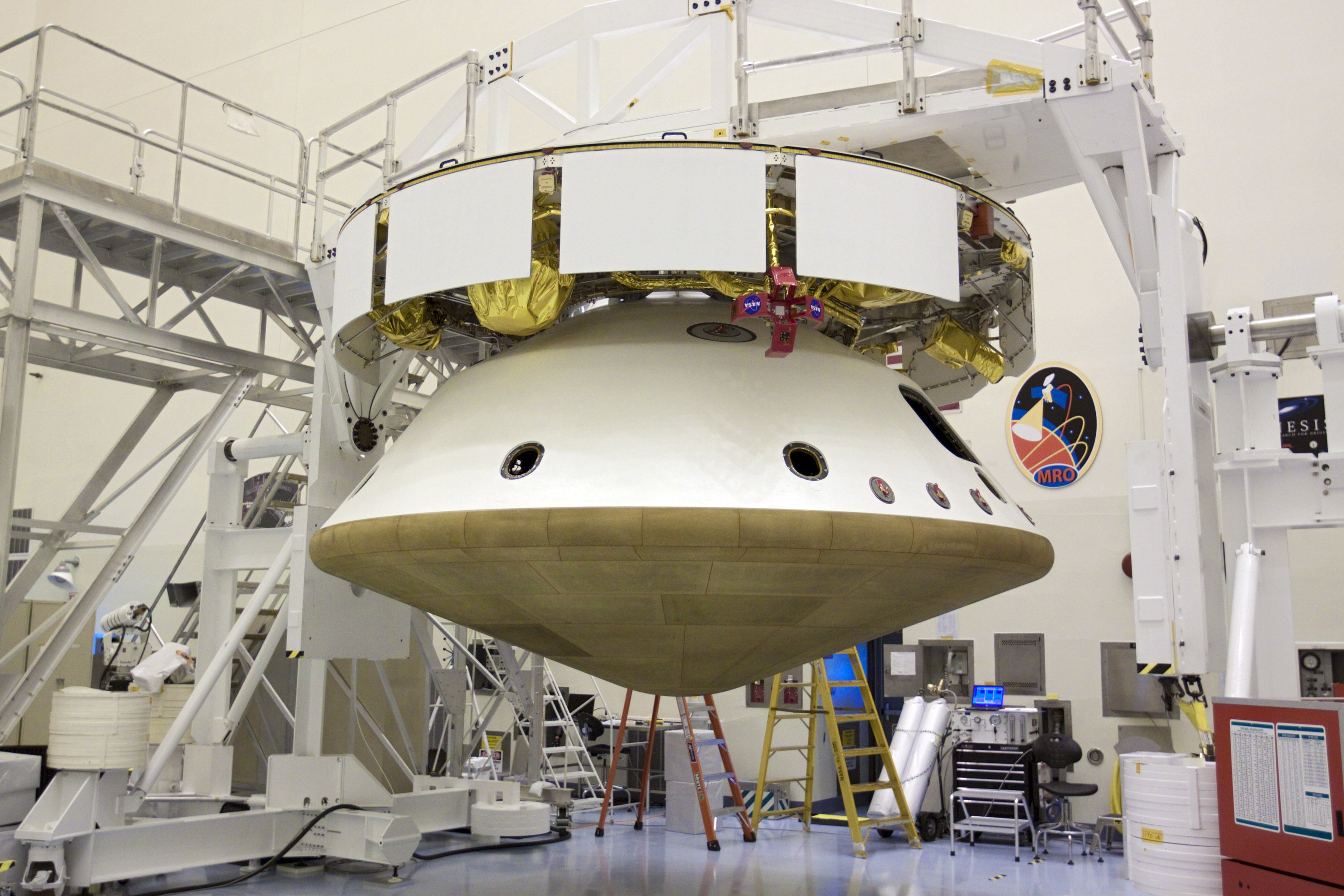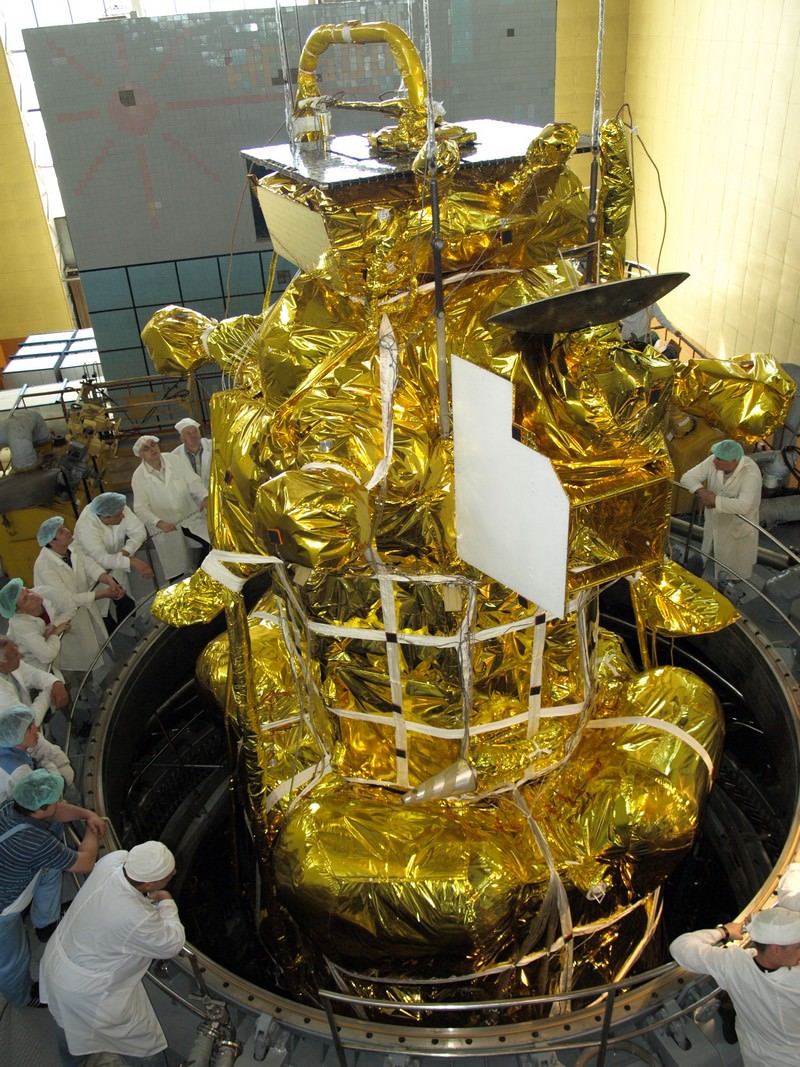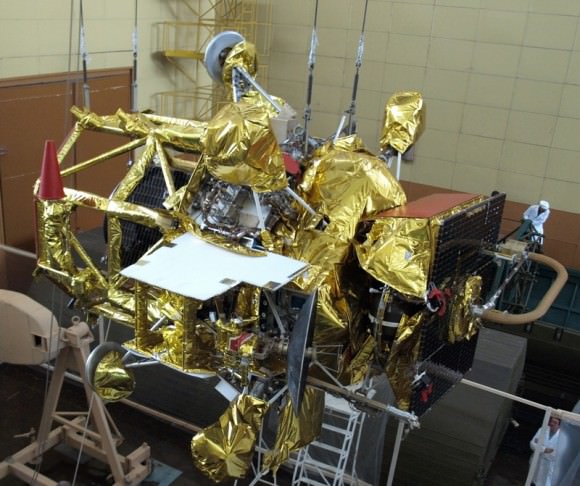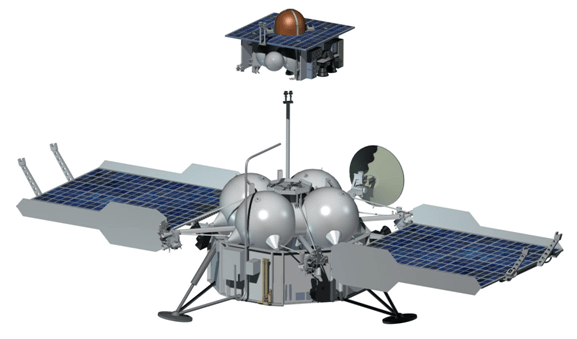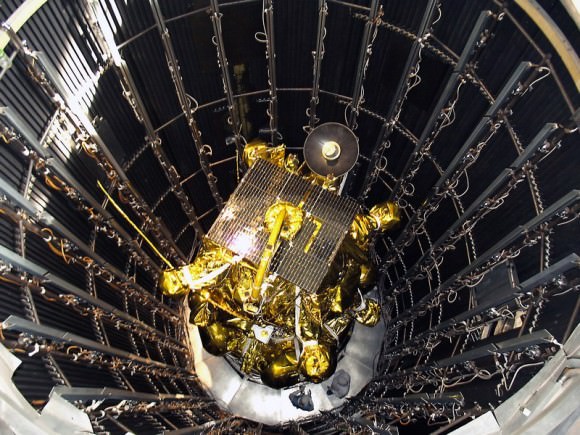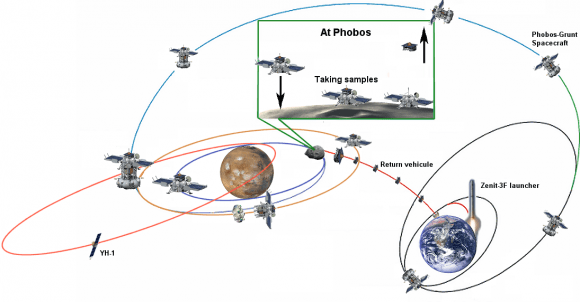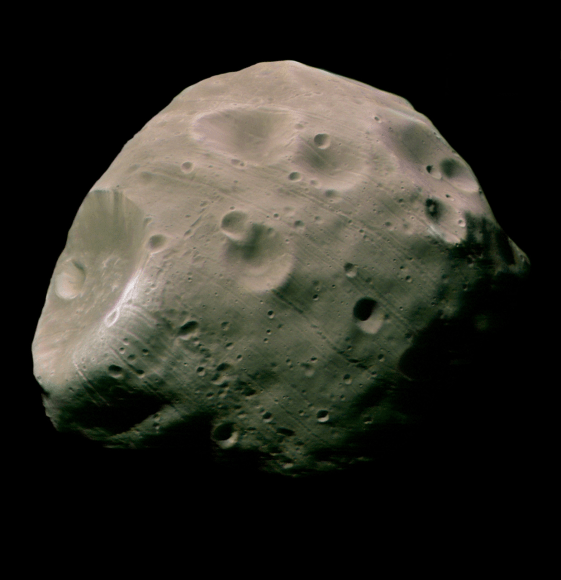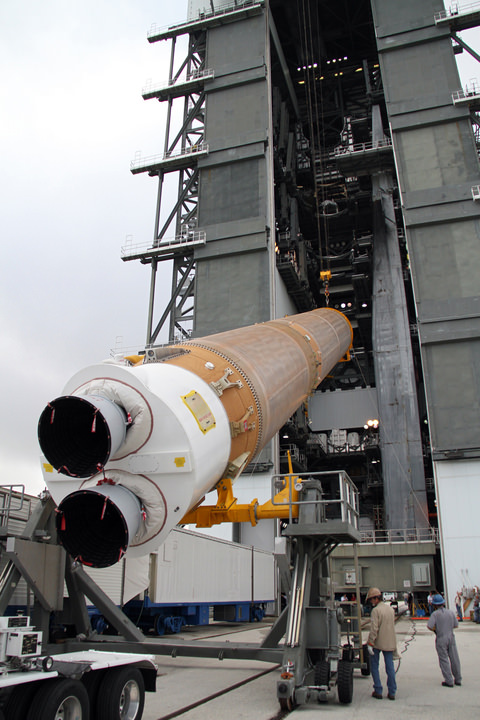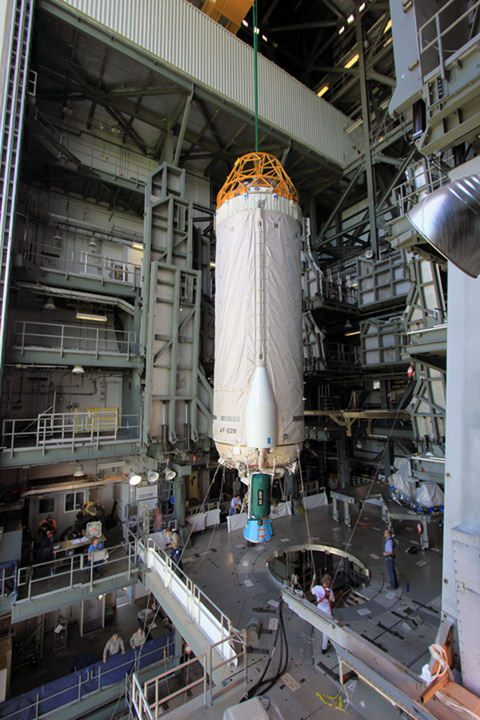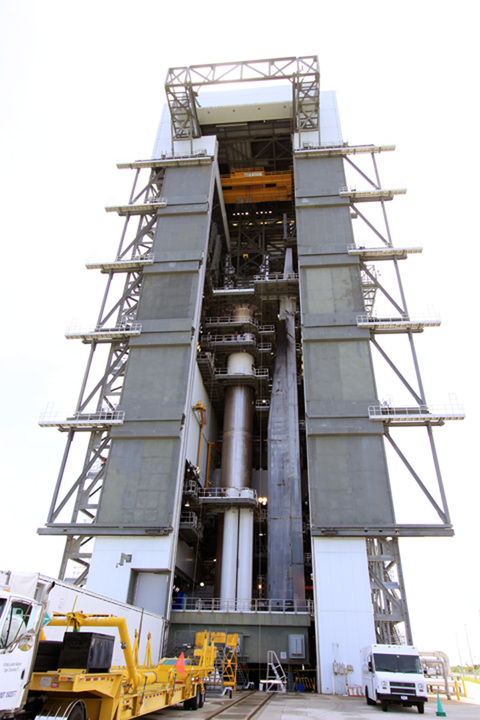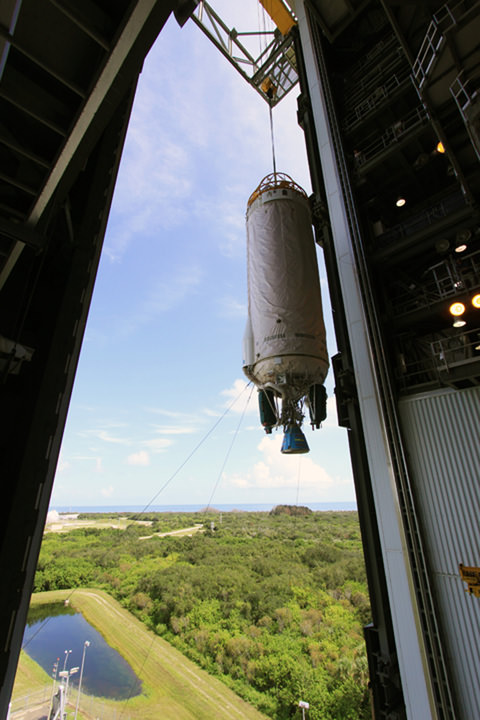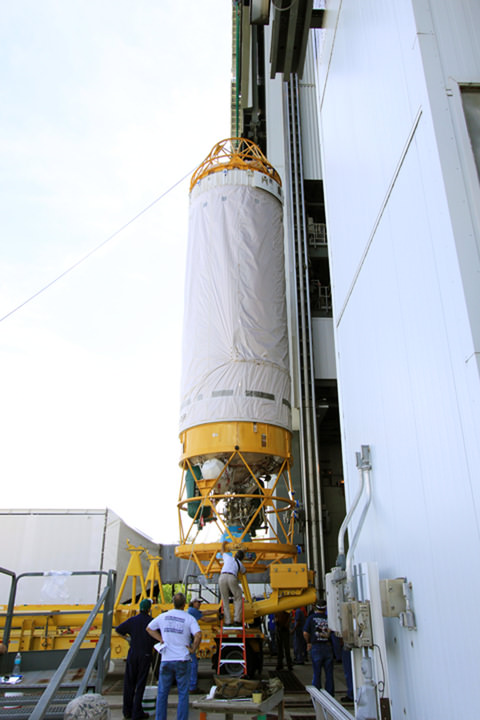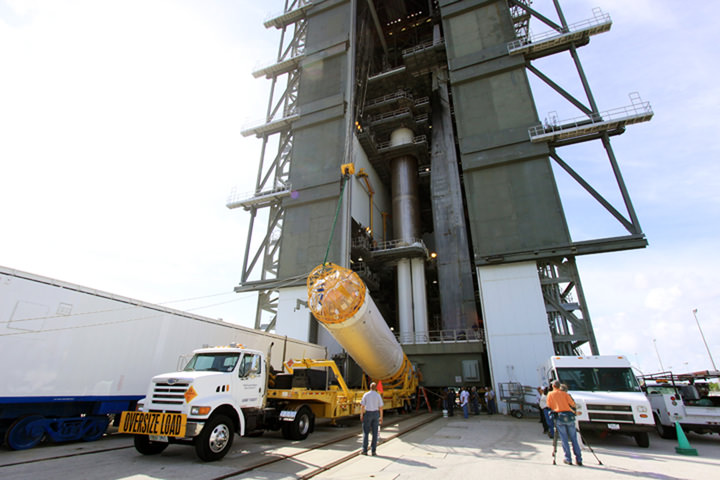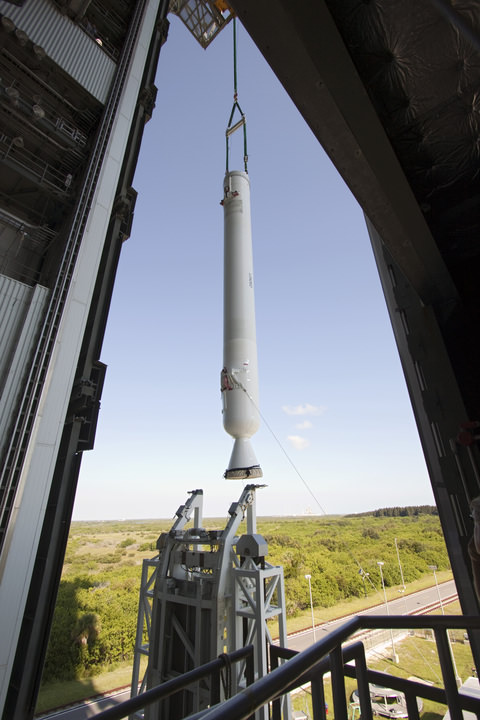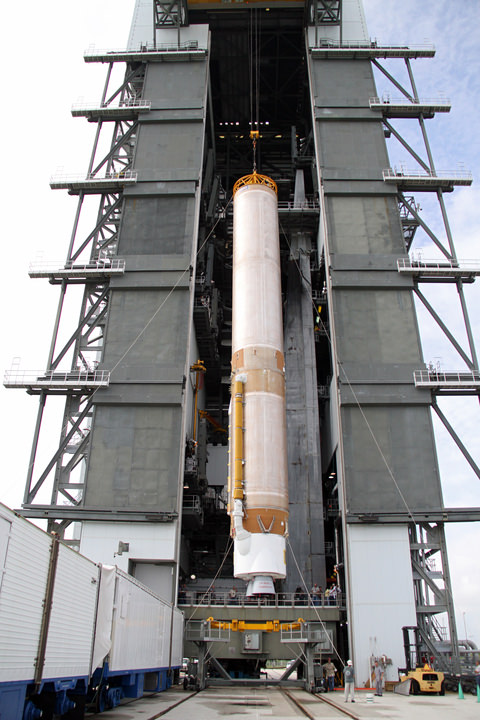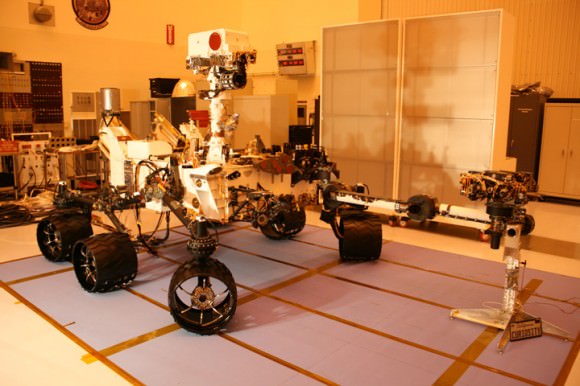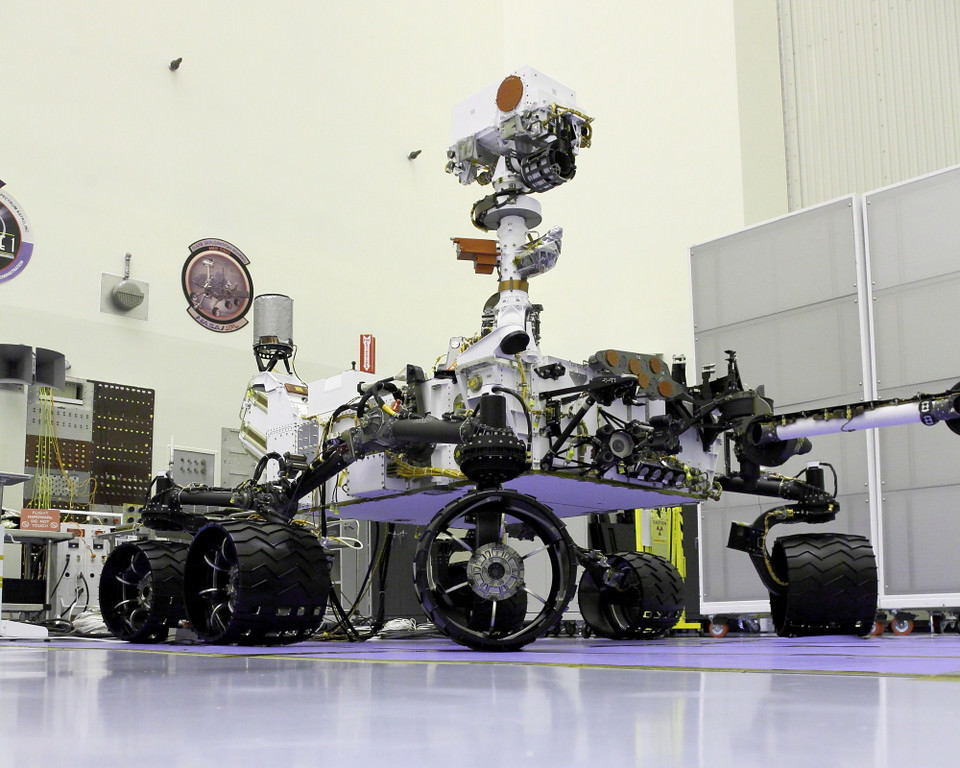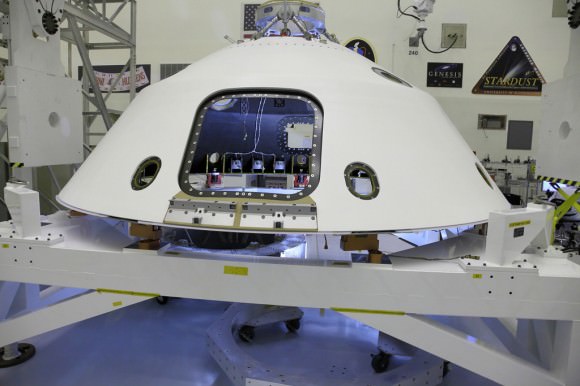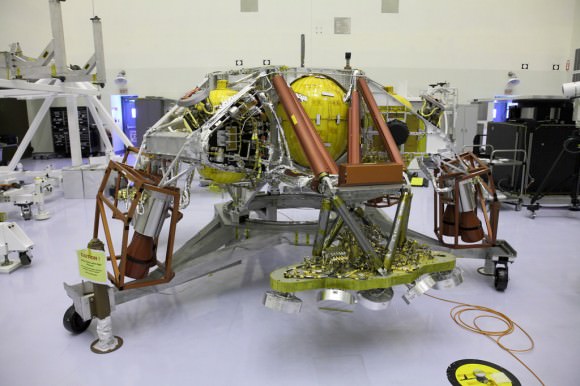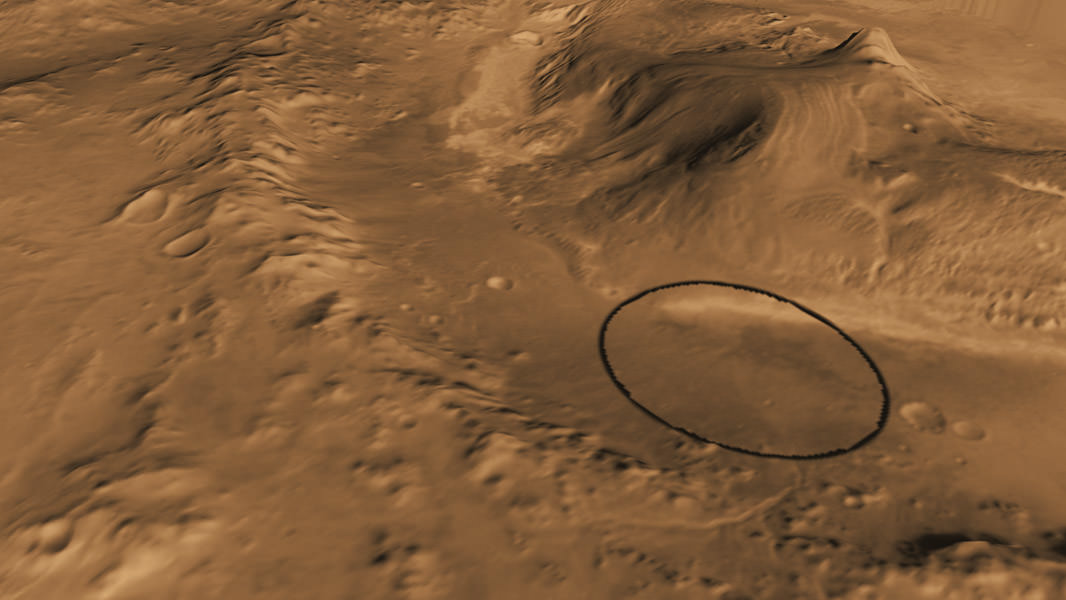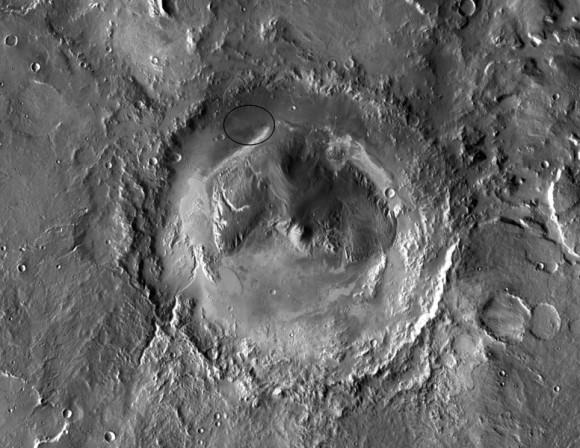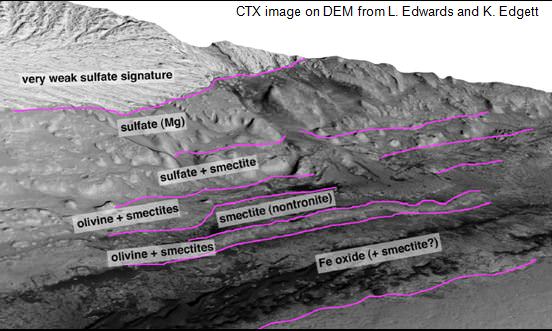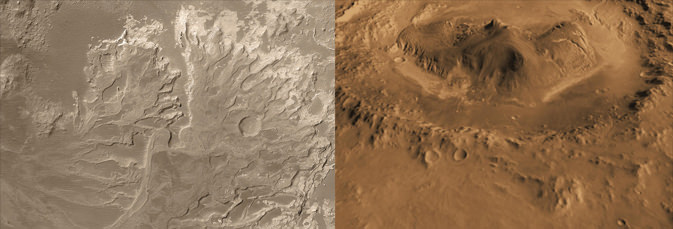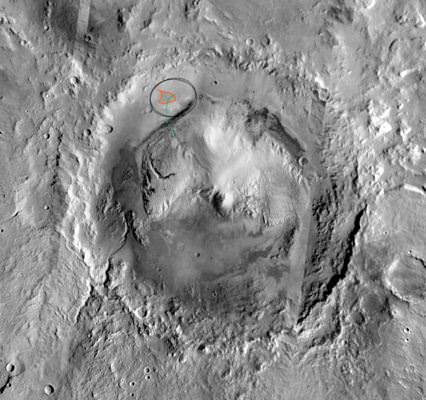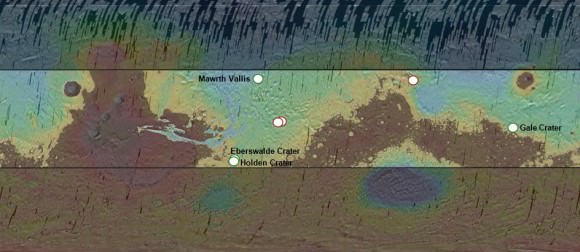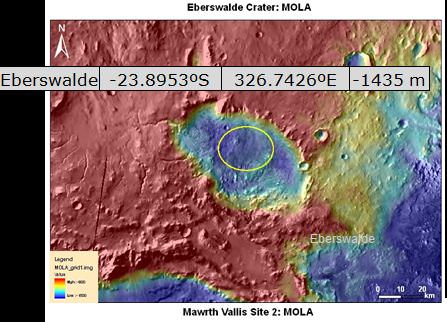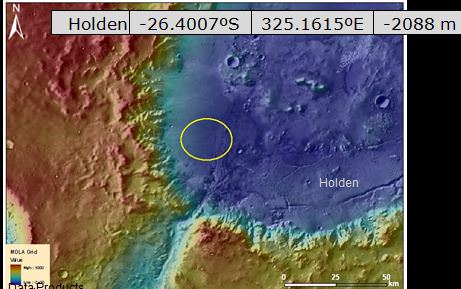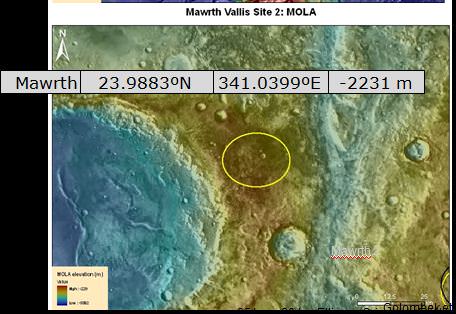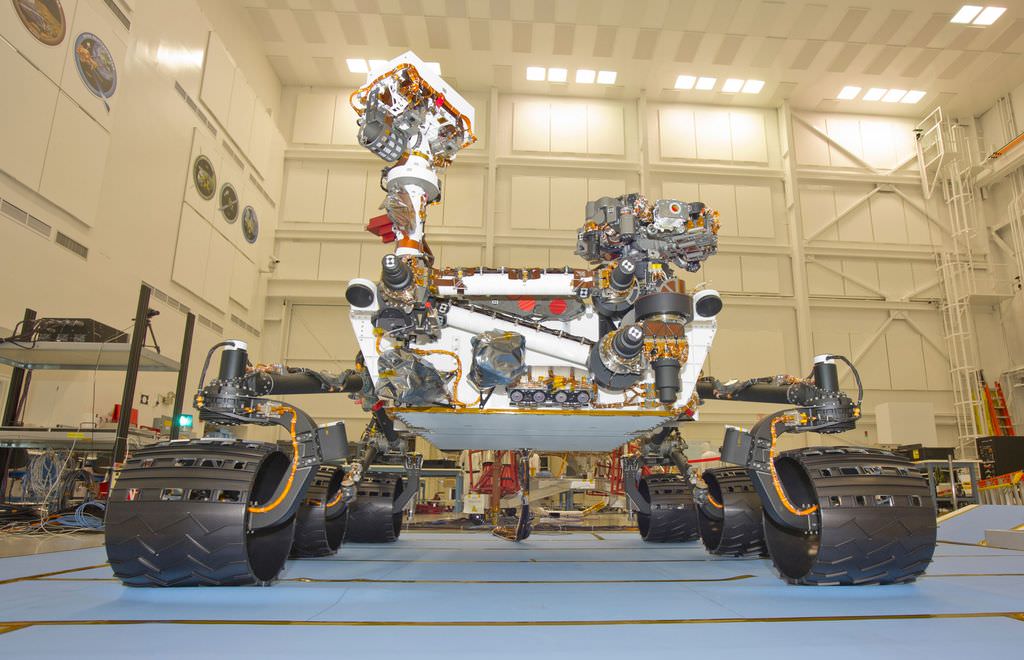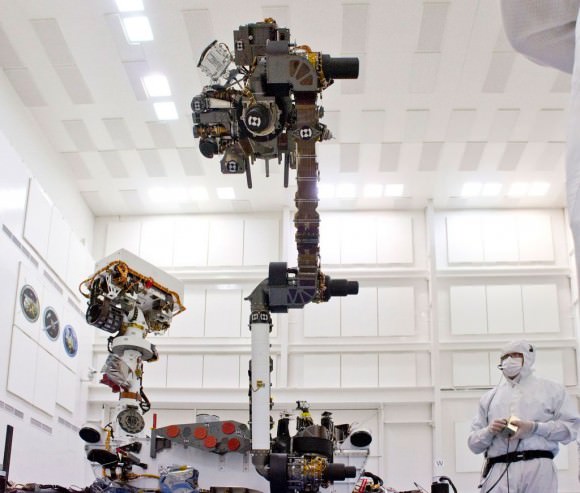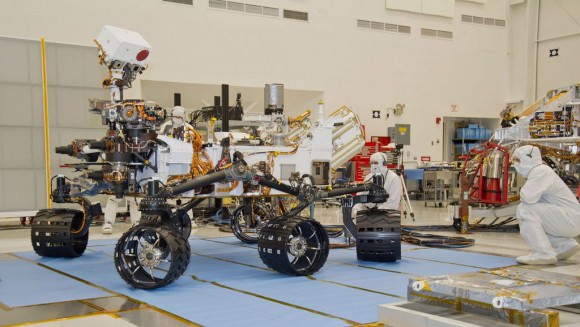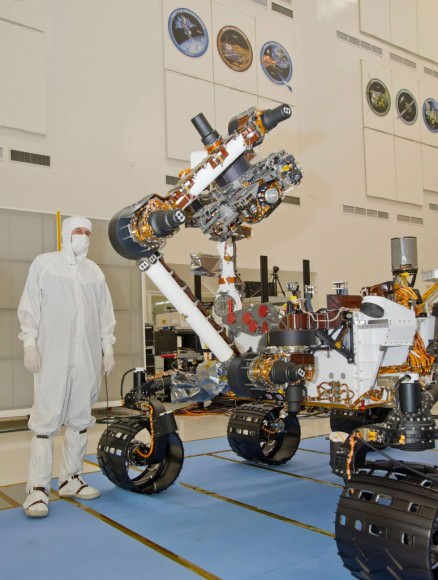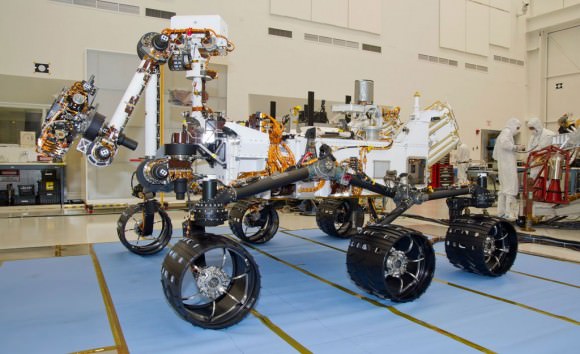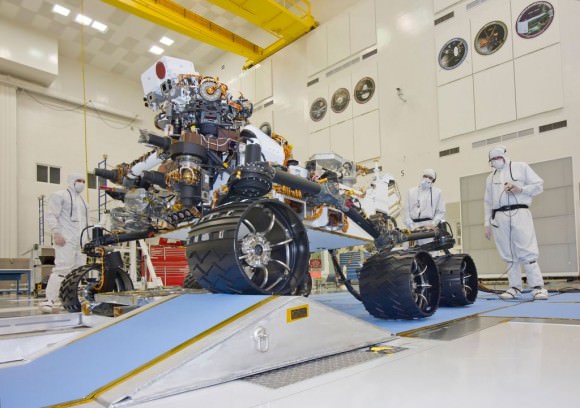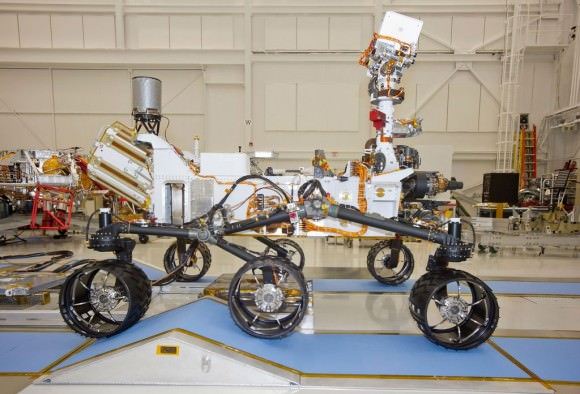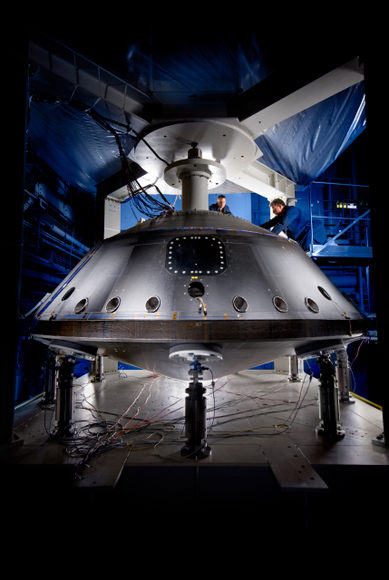[/caption]
Take a good last, long look at the magnificent robot that is Curiosity, because she’s been all buttoned up for her long Martian voyage in search of the ingredients of life. After years of exhaustive work, the most technologically advanced surface robotic rover ever to be sent beyond Earth has been assembled into the flight configuration, a NASA spokesperson informed Universe Today.
The next time Curiosity opens her eyes she will have touched down at the foot of a layered mountain inside the planet’s Gale crater.
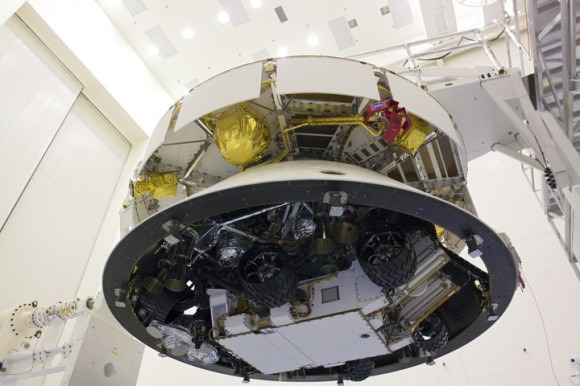
Curiosity – NASA’s next Mars rover – is formally known as the Mars Science Laboratory (or MSL) and has entered the final stages of preflight processing.
After extensive quality assurance testing, Curiosity has been encapsulated for the final time inside the aeroshell that will be her home during the 10 month long interplanetary cruise to Mars. Furthermore, she’s been attached to the cruise stage that will guide her along the path from the home planet to the red planet.
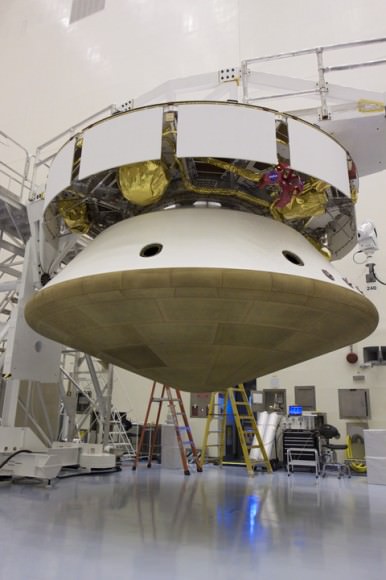
The work to combine all the components into an integrated assembly was carried out inside the clean room facilities of the Payload Hazardous Servicing Facility at NASA’s Kennedy Space Center (KSC) in Florida.
The aeroshell is comprised of the heat shield and back shell.
The job of the aeroshell is to protect Curiosity from the intense heat of several thousand degrees F(C) generated by friction as the delicate assemblage smashes into the Martian atmosphere at about 13,200 MPH (5900 m/s) and plummets some 81 miles during the terrifying seven minute long entry, descent and landing (EDL) on the surface.
See Video animation below
The massive 2000 lb (900 kg) rover is folded up and mated to the back shell powered descent vehicle, known as the PDV or Sky Crane. The spacecraft is designed to steer itself through a series of S-curve maneuvers to slow the spacecraft’s descent through the Martian atmosphere.
In the final moments, the rocket powered Sky crane will lower the robot on tethers and then safely set Curiosity down onto the ground at a precise location inside the chosen landing site astride a layered mountain in Gale Crater believed to contain phyllosilicate clays and hydrated sulfate minerals that formed in liquid water.
The robot is the size of a compact car and measures three meters in length, roughly twice the size of the MER rovers; Spirit and Opportunity. It is equipped with 10 science instruments for a minimum two year expedition across Gale crater.
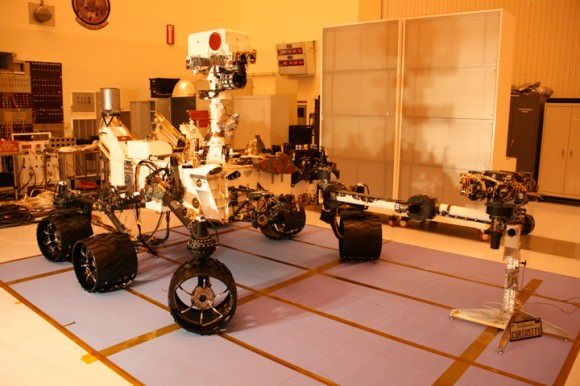
Inside the Clean room at the Payload Hazardous Servicing Facility at the Kennedy Space Center.
The science payload weighs ten times more than any prior Mars rover mission. Curiosity will zap rocks with a laser and deftly maneuver her outstretched robotic arm to retrieve and analyze dozens of Martian soil samples. Credit: Ken Kremer
Curiosity will search for the ingredients of life including water and organic molecules and environmental conditions that could have been hospitable to sustaining Martian microbial life forms if they ever existed in the past or survived to the present through dramatic alterations in Mars climatic and geologic history.
Liftoff of the $2.5 Billion Curiosity rover is slated for Nov. 25 from Cape Canaveral Air Force Station in Florida on a United Launch Alliance Atlas V booster rocket. The launch window to Mars extends until Dec. 18.
This coming week, Curiosity will be encapsulated into the clamshell like payload fairing and the MSL logo will then be applied to the fairing, KSC spokesman George Diller told Universe Today. It will then be hoisted onto the payload transporter and carefully conveyed to Space Launch Complex 41 on Nov. 2, for mating atop the Atlas V rocket.
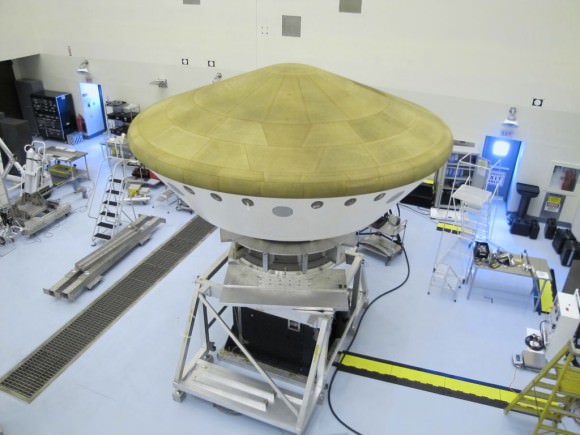
Read Ken’s continuing features about Curiosity starting here:
Assembling Curiosity’s Rocket to Mars
Encapsulating Curiosity for Martian Flight Test
Dramatic New NASA Animation Depicts Next Mars Rover in Action
Read Ken’s features about Russia’s upcoming Phobos-Grunt, Earth’s other 2011 Mars mission here::
Phobos-Grunt and Yinghou-1 Arrive at Baikonur Launch Site to tight Mars Deadline
Phobos-Grunt: The Mission Poster
Daring Russian Sample Return mission to Martian Moon Phobos aims for November Liftoff

